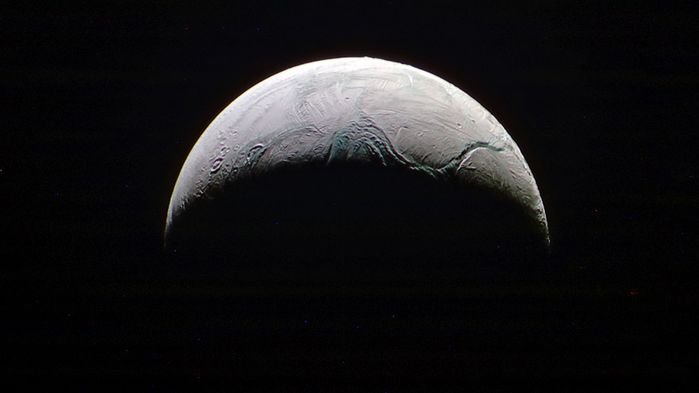Might ET be buried under too much ice to phone Earth? That’s what planetary scientist Alan Stern of the Southwest Research Institute in Boulder, Colorado, has concluded may be delaying our contact with alien civilizations. Most extraterrestrial creatures are likely deep inside their home planets, in subsurface oceans crusted over in frozen water ice, according to a new proposal at this year's American Astronomy Society Division for Planetary Sciences meeting in Provo, Utah. The hypothesis could explain the lack of signals from other technologically advanced civilizations, a conundrum known as the Fermi paradox.
It’s only recently that astronomers have come to appreciate how common oceans are in our solar system; evidence for them can be seen on several moons of Jupiter, Saturn, and Neptune, and even distant Pluto. These worlds all have water ice as a major component of their crusts, which forms towering mountains and cracked canyons on their surfaces but melts into liquid water at lower depths. Hydrothermal vents on these ocean beds might pump nutrients into their surroundings, similar to ecosystems at the bottom of Earth’s oceans. Such nurseries for life—shielded from space by a thick ice shell—might even be more productive than our own exposed environment.
And should living organisms on icy ocean worlds evolve into intelligent creatures, they probably wouldn’t know the night sky as well as us humans. Perhaps the equivalent of their “space program” would simply be boring through to the frozen surface of their planet, Stern suggests. His proposal wasn’t based on new evidence, but for the first time links up the prevalence of icy ocean worlds with the lack of alien signals.
Hi! I am a robot. I just upvoted you! I found similar content that readers might be interested in:
https://mrbarlow.wordpress.com/2017/10/20/might-alien-life-be-buried-under-too-much-ice-to-phone-earth/